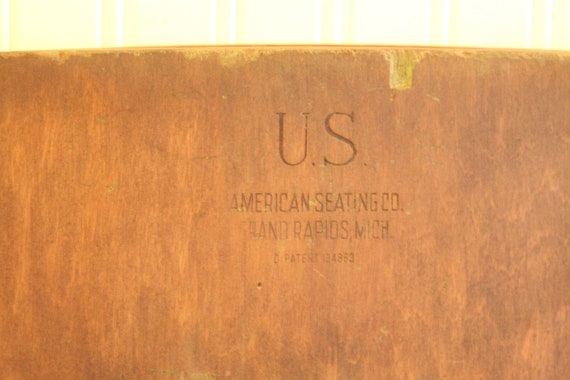
I was drawn to this wonderful folding chair by the transitional nature of its design, which combines moulded plywood with quarter-sawn oak and sturdy industrial metal hinges. The tag said it was a steamship deck-chair, but I knew that wasn't the case at a glance.

The stamp tells me it was made by American Seating Company, Grand Rapids, Michigan,
who are still in business (in the same location even!) today.
Is that the ghost of an ink-stamped S that I see under the stamp?
Here is a sibling wartime wooden folding chair on Etsy, with an identical shape and hinges, and a giant U.S. stamp on the back instead of the round stamp (and remnants of inked identification) mine has:
 |
| Via Etsy listing for a chair almost identical to mine, which must date to 1943-1945. |
From 1939-1941, Charles Eames taught at Cranbrook Academy of Art outside of Detroit, Michigan. I can't help but wonder whether Nordmark was a student or colleague of Eames, and whether this elegant folding design was part of a larger conversation in the design community about plywood use that culminated in the creation of the Charles & Ray Eames' famous LCW.
The finish on this chair is really dinged up, with signs of water damage on the seat, which is why it was only $68. Now that I've determined that it isn't a rare item, I feel okay about refinishing (in a way that doesn't erase its history) and sealing the surface so I can use it beside the tub in the ensuite without damaging it further.


I just bought the same chair at a yard sale for $5
ReplyDelete